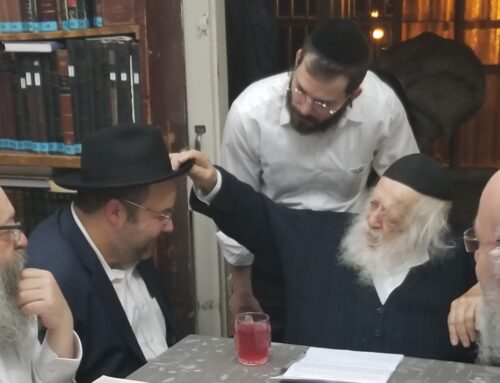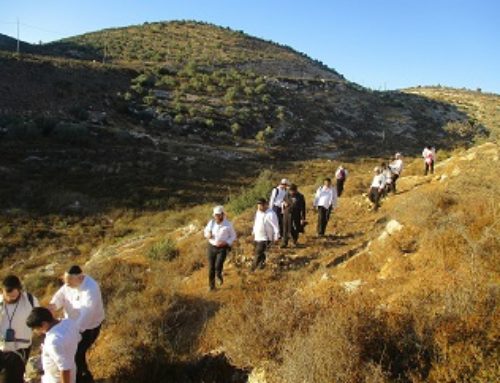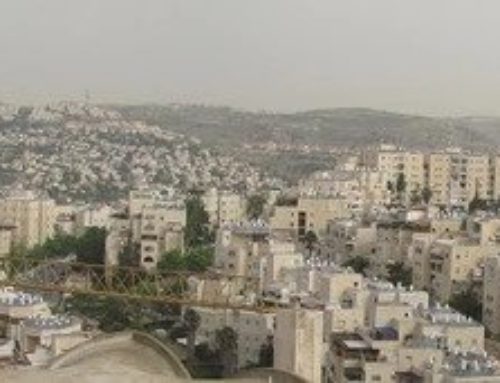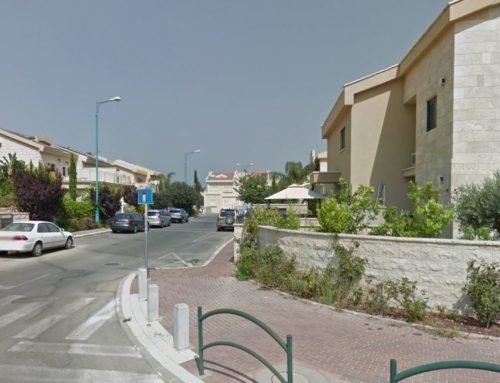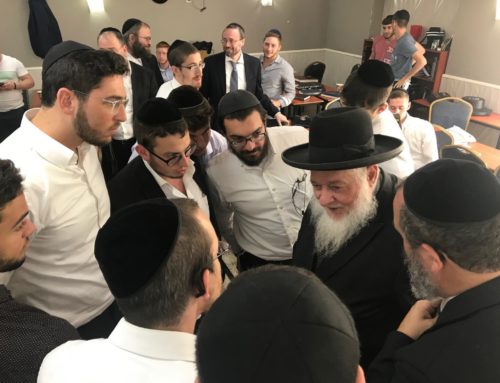For Living Jews, Too!
Gedaliah O., Old City, Yerushalayim
My family immigrated to Eretz Yisroel when I was seven years old. We were a regular frum American balebatish family from Manhattan. My parents had lived here eighteen years earlier for a very short while, while volunteering on a kibbutz.
A year before we moved, we came to Eretz Yisroel on a pilot trip. At some of the American families we stayed by, the children did not speak any English. My father would never forget that, and he made it a rule that in our house we’d only speak English.
Before leaving America, my parents hired a tutor to teach me some Hebrew. He taught me maybe thirty words. Though it was of some assistance to me, it was still quite difficult when I arrived here.
When I started school in Eretz Yisroel, I had no idea what was going on. After a while, I started having some minor social issues there, so I transferred to another school. I had a few friends there and attended ulpan [school for learning the Hebrew language].
We had started out in a merkaz klita [absorption center] in Mevaseret Tzion near Yerushalayim. We then moved to permanent housing in the town of Kochav Yaakov. It is considered a Torani town, meaning that the people there are Torah observant, though from various backgrounds and sects, ranging from Dati-Leumi [National Religious] to Chareidi. Across the road is the entirely Chareidi town of Tel Zion. Today there are many children from Kochav Yaakov that attend the institutions there—but that was built only several years later. I started attending a Dati-Leumi school in nearby Maale Michmash.
Though by the time we moved I had already completed third grade, the principal of the new school suggested I join their school’s third grade, since it was a small class with only seven other children. If I would have gone to fourth grade, I would have been in a much larger class with twenty kids. This choice served me well. Additionally, because my new rebbi was extremely dedicated to his job, I was so successful. He basically didn’t know any English, and I knew very little Hebrew, yet within a month I was filling out the biurei millim [word explanations] worksheet with simple Hebrew instead of translating it all into English, thanks to his determination.
After a year in yeshiva ketana, I was having some difficulty in integrating into the surrounding society, so I went back to America to learn in the Yeshiva of Bayonne. I also wanted some secular studies, and this way I got them in a Chareidi environment. In the U.S., I skipped to a higher grade, as the level in Eretz Yisroel is higher. I had an older brother that learned there, and I have a married sister who lives in Brooklyn where I would go for an off-Shabbos. My parents had kept a business in the States, so they would fly in occasionally and I would get to see them. They would also fly every Sukkos to my grandparents in Phoenix, and I would join them from Bayonne. Some of my hashkafah as well as my Chareidi attire has stuck with me from my time in Bayonne.
After finishing high school in Bayonne, I came back to Eretz Yisroel and attended a small yeshiva until I got married. I then started learning in R’ Nechemia Kaplan’s yeshiva.
For the first year of marriage, we lived in the Sanhedria neighborhood of Yerushalayim. We then moved to Maaleh HaZeitim, where we lived for the next five years.
Maaleh HaZeitim is a cluster of small Jewish neighborhoods on Har HaZeisim. In addition to hosting the famous Jewish cemetery, there are a lot of Arabs around—some not so very friendly—so I would keep a small stone in my pocket. However, in the course of five years I never ended up having to use it even once. The Jewish presence in the area has greatly reduced the rampant vandalism to Jewish tombstones that was once a normalcy.
In addition to being the resting place of many great tzaddikim, the Har HaZeisim cemetery is also a reminder of the time when people would come to Eretz Yisroel to spend their last days here. Today, B”H, Eretz Yisroel is a place for living Jews and for Jewish living, too!
The country has advanced immensely over the past 25 years. Besides for the gashmiyus side of things—new roads, highways, trains, technology, etc—there are hundreds of yeshivos; various learning programs like avos uvanim and “Yeshivas Mordechai HaTzaddik” [the Purim learning program] are very popular here. Although it is much more acceptable for Chareidim to work than it was thirty years ago, there are not less people learning because of that, considering the immense Chareidi population growth.
There are Chareidi programs for learning trades and for frum people who want to earn degrees. The country accommodates accreditation from other countries; it is a process to get the accreditation recognized, but it is doable. I have a sister-in-law who was licensed to be a nurse in the US, took a test here, and she is now a nurse in Eretz Yisroel.
I find Eretz Yisroel has an enjoyable “homey” Jewish feel—people walking around with taleisim and sometimes tefillin, the Shabbos siren going off at candle-lighting time, a lot of simchas and other Jewish activities all make up this wonderful atmosphere where Jewish people and Jewish living are valued.
Economics Observation
I remember overhearing a conversation between my sister and sister-in-law, one of whom lives in Eretz Yisroel and the other who is still in chutz laAretz. They were discussing the financial differences between both places.
Their bottom line was that it could be the same game in either place for a standard family to make the effort to make ends meet. While one of them made quite a respectable living in the US, after tuition for four kids, maintenance for two cars, housing, and other expenses, not much remained. The one in Eretz Yisroel was earning less than a quarter the amount but was also spending exponentially less on education—and the tremendously lower cost of medical care, a wedding, a bris, or kiddush also cannot be compared.
There really isn’t more money in the US because it’s also needed much more. When there is a bit left over, it goes much further here.
This article is part of our Haaretz Hatovah series featuring Yidden living in, settling, and building up Eretz Yisroel. For more information please contact us at [email protected] or visit naavakodesh.org/haaretz-hatovah
Reprinted with permission from Yated Ne’eman


